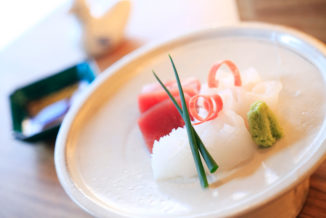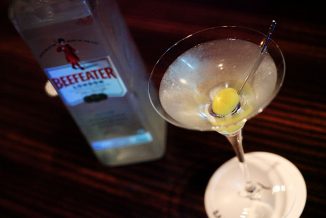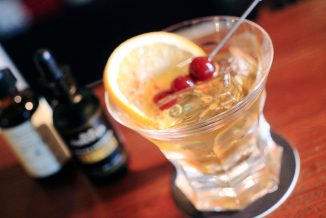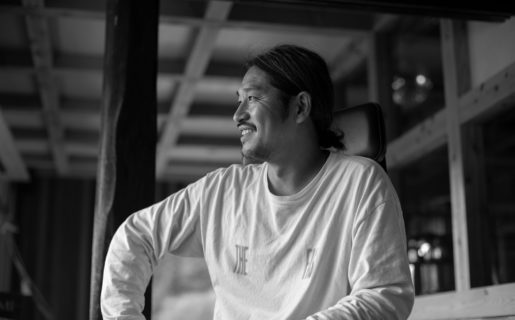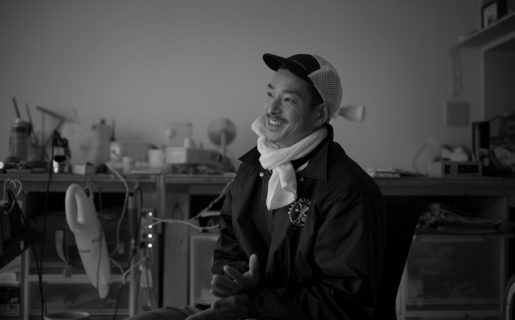PADDLER’S EYE 湘南の今を独自取材した特集と連載
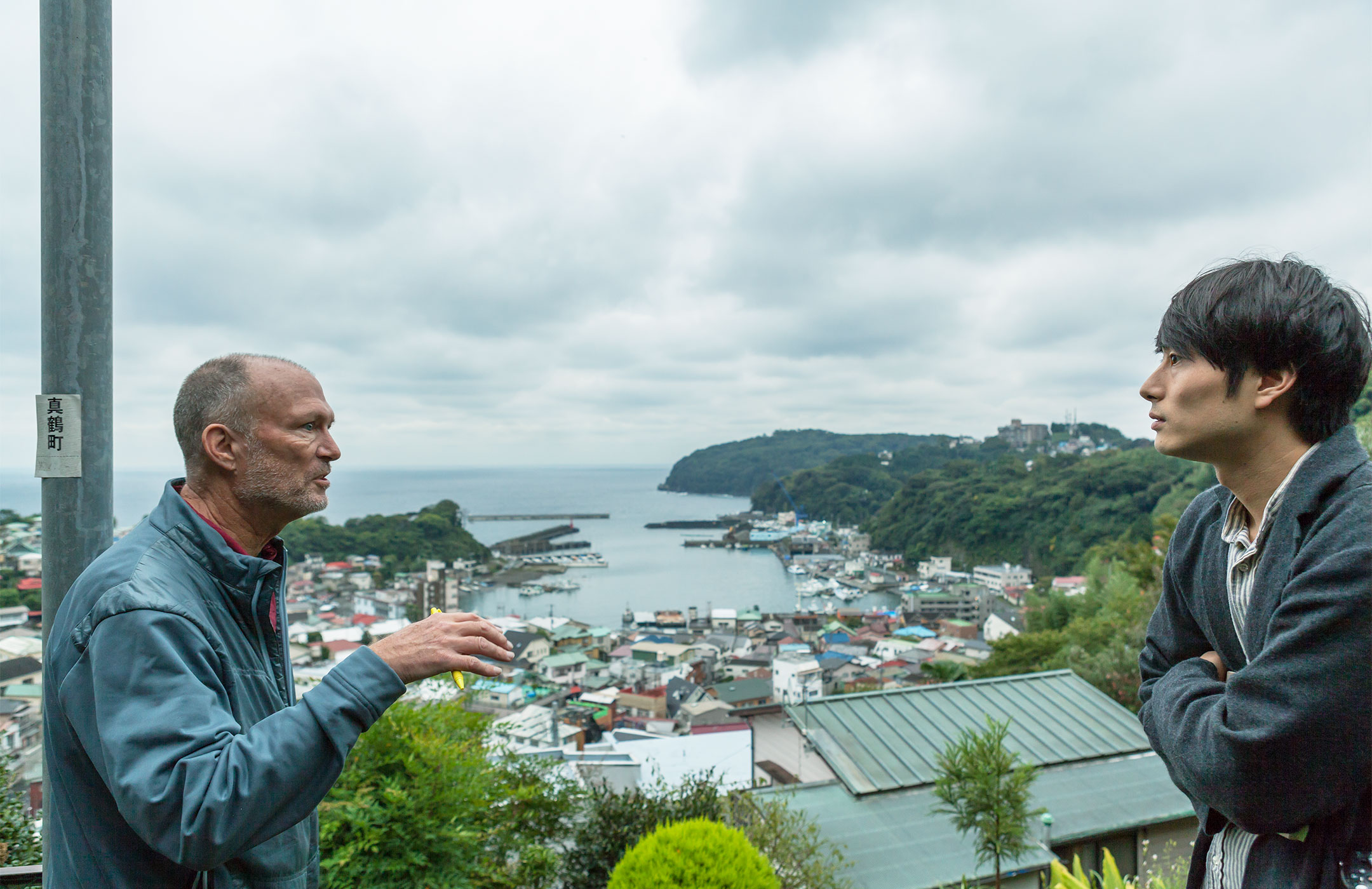
SHONAN CODE
No.1
真鶴町「美の基準」
住民自らの手で勝ち取った、勇敢の証
Manazuru’s brave stand
湘南の魅力、それはすばらしい自然、文化、伝統、営みの調和にほかならない。
ここに暮らす僕らは、地域の様々な事象を取材しながら、
湘南本来の魅力を未来に受け継いでいくための
「基準= SHONAN CODE」を1条ずつ紡ぐことにした。
このコードを導き出すのは、ジャーナリストのグレゴリー・スターさん。
湘南コードNo.1は、この連載のインスピレーション源となった『美の基準』のストーリーから。
*Scroll down for the English text*
Photos: Nobuo Yano Text: Gregory Starr
この物語は、黒澤明監督による映画『七人の侍』のストーリーとよく似ている。ある小さな町が、強力な勢力に侵略されそうになり、町民は一丸となって反撃を決心する。彼らはより強力な敵との戦いを案じ、助けを得るために専門家らを探しに行く。一部反対勢力の住人が存在するにも関わらず、彼らは参画した専門家たちとともに、ついには侵略者たちから自らの土地と暮らしを守り抜くことができた。
とはいえ、このストーリーは、ほんのつい最近のものだ。断固として町を守り抜いたのが、湘南と伊豆の境界に位置する真鶴町。相模湾の西端で深い森林からなる真鶴半島と、海と山からなる美しい景色に抱かれた町だ。なぜ、この町のストーリーがそれほどまでに重要なのか? なぜならコミュニティやライフスタイル、文化の保全を考える誰にとっても、示唆に富む素晴らしい実例であるからだ。
ごく典型的な真鶴町役場の2階には、“侵略者”の再来を防止する多田英高さんがいる。彼は私たちに、平成初期に真鶴町の海岸線や丘陵地が、どのようにディベロッパーによるリゾートマンション開発の標的にされていたかを語ってくれた。その種の開発は、バブル時代に熱海を始めとして、周囲の海岸沿いのランドスケープを劇的に破壊してきたものだ。真鶴町は当時、開発の賛否で分裂したが、激戦の選挙で保護派が勝利。当選した新町長の三木邦之さんは町民に不変の責任を約束したという。
真鶴町は、3人の外部からの専門家の助けを得た。プランナーの野口和雄さんと法政大学教授の五十嵐敬喜さん、建築家の池上修一さんだ。彼らは町の環境と、真鶴というコミュニティを特徴づける重要な要素に着目していった。そして、人間的スケールを大切にした都市計画家で建築家のクリストファー・アレグザンダーが提唱した建築と都市計画に関わる理論『パターン・ランゲージ』(1977年刊)を参考にし、真鶴町は独自の『美の基準』という「まちづくり条例」を1993年につくり上げたのだ。
窓口カウンターに座った多田さんは、敬意をもって『美の基準』の本を開き、「まちづくり条例」にある表現について話してくれた。ほかの行政機関にありがちな、難解で読みにくいお役所書類とは一線を画し、温かみのある質感をもった168ページに及ぶ『美の基準』には、「戸と窓の大きさ」といった具体的タイトルのほか、「ほどよい駐車場」というような曖昧なタイトルなど、全69の基準(コード)が、私たちを導いてゆく。理解のしやすさを第一に、コンパクトでわかりやすい説明が添えられ、魅力的なスケッチと写真が引用されている。
ひとたびページをめくれば、それぞれのページの構築において、費した時間と心遣いを感じることができるだろう。どれほど彼らがこの町の特性をスタディし、それらを維持、改善していくための手段を探すことに苦労してきたことか。
結果として、それらの努力は、大きな価値あるものとなった。条例は、開発者や建設業者による否応なしの侵害を阻止するのに役立ち、町に悪影響を与える開発を停止するものとなった。そして今もなお、真鶴町はその作業を日々続けている。多田さんの任務は、新しい建造物の計画段階で、建築家や建設会社と面会し、それらが69の基準を満たすものまでに導くことだ。この条例は、環境保護の観点から、とても常識的であり、実際的なのだ。
とはいえ、このストーリーは、ほんのつい最近のものだ。断固として町を守り抜いたのが、湘南と伊豆の境界に位置する真鶴町。相模湾の西端で深い森林からなる真鶴半島と、海と山からなる美しい景色に抱かれた町だ。なぜ、この町のストーリーがそれほどまでに重要なのか? なぜならコミュニティやライフスタイル、文化の保全を考える誰にとっても、示唆に富む素晴らしい実例であるからだ。
ごく典型的な真鶴町役場の2階には、“侵略者”の再来を防止する多田英高さんがいる。彼は私たちに、平成初期に真鶴町の海岸線や丘陵地が、どのようにディベロッパーによるリゾートマンション開発の標的にされていたかを語ってくれた。その種の開発は、バブル時代に熱海を始めとして、周囲の海岸沿いのランドスケープを劇的に破壊してきたものだ。真鶴町は当時、開発の賛否で分裂したが、激戦の選挙で保護派が勝利。当選した新町長の三木邦之さんは町民に不変の責任を約束したという。
真鶴町は、3人の外部からの専門家の助けを得た。プランナーの野口和雄さんと法政大学教授の五十嵐敬喜さん、建築家の池上修一さんだ。彼らは町の環境と、真鶴というコミュニティを特徴づける重要な要素に着目していった。そして、人間的スケールを大切にした都市計画家で建築家のクリストファー・アレグザンダーが提唱した建築と都市計画に関わる理論『パターン・ランゲージ』(1977年刊)を参考にし、真鶴町は独自の『美の基準』という「まちづくり条例」を1993年につくり上げたのだ。
窓口カウンターに座った多田さんは、敬意をもって『美の基準』の本を開き、「まちづくり条例」にある表現について話してくれた。ほかの行政機関にありがちな、難解で読みにくいお役所書類とは一線を画し、温かみのある質感をもった168ページに及ぶ『美の基準』には、「戸と窓の大きさ」といった具体的タイトルのほか、「ほどよい駐車場」というような曖昧なタイトルなど、全69の基準(コード)が、私たちを導いてゆく。理解のしやすさを第一に、コンパクトでわかりやすい説明が添えられ、魅力的なスケッチと写真が引用されている。
ひとたびページをめくれば、それぞれのページの構築において、費した時間と心遣いを感じることができるだろう。どれほど彼らがこの町の特性をスタディし、それらを維持、改善していくための手段を探すことに苦労してきたことか。
結果として、それらの努力は、大きな価値あるものとなった。条例は、開発者や建設業者による否応なしの侵害を阻止するのに役立ち、町に悪影響を与える開発を停止するものとなった。そして今もなお、真鶴町はその作業を日々続けている。多田さんの任務は、新しい建造物の計画段階で、建築家や建設会社と面会し、それらが69の基準を満たすものまでに導くことだ。この条例は、環境保護の観点から、とても常識的であり、実際的なのだ。
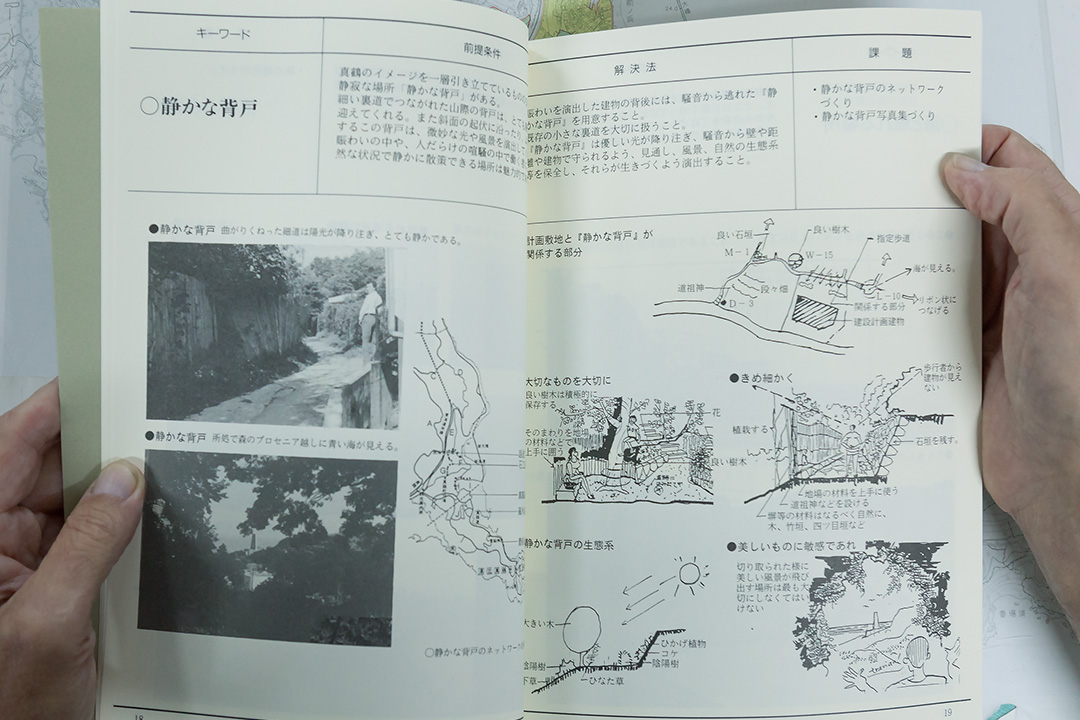
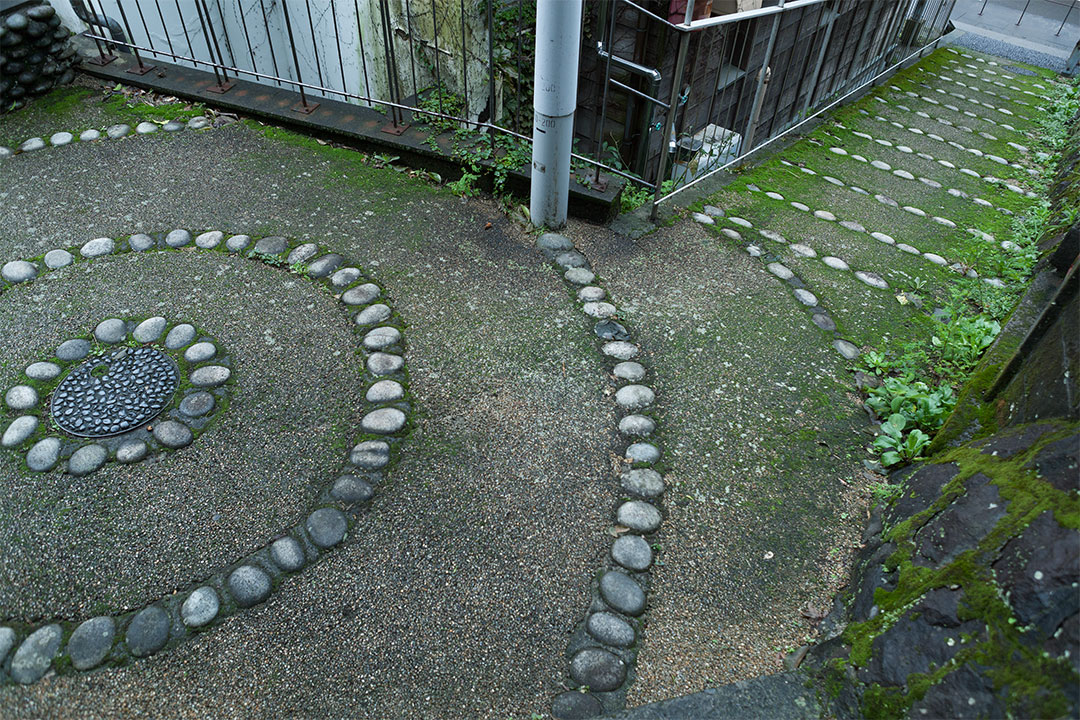
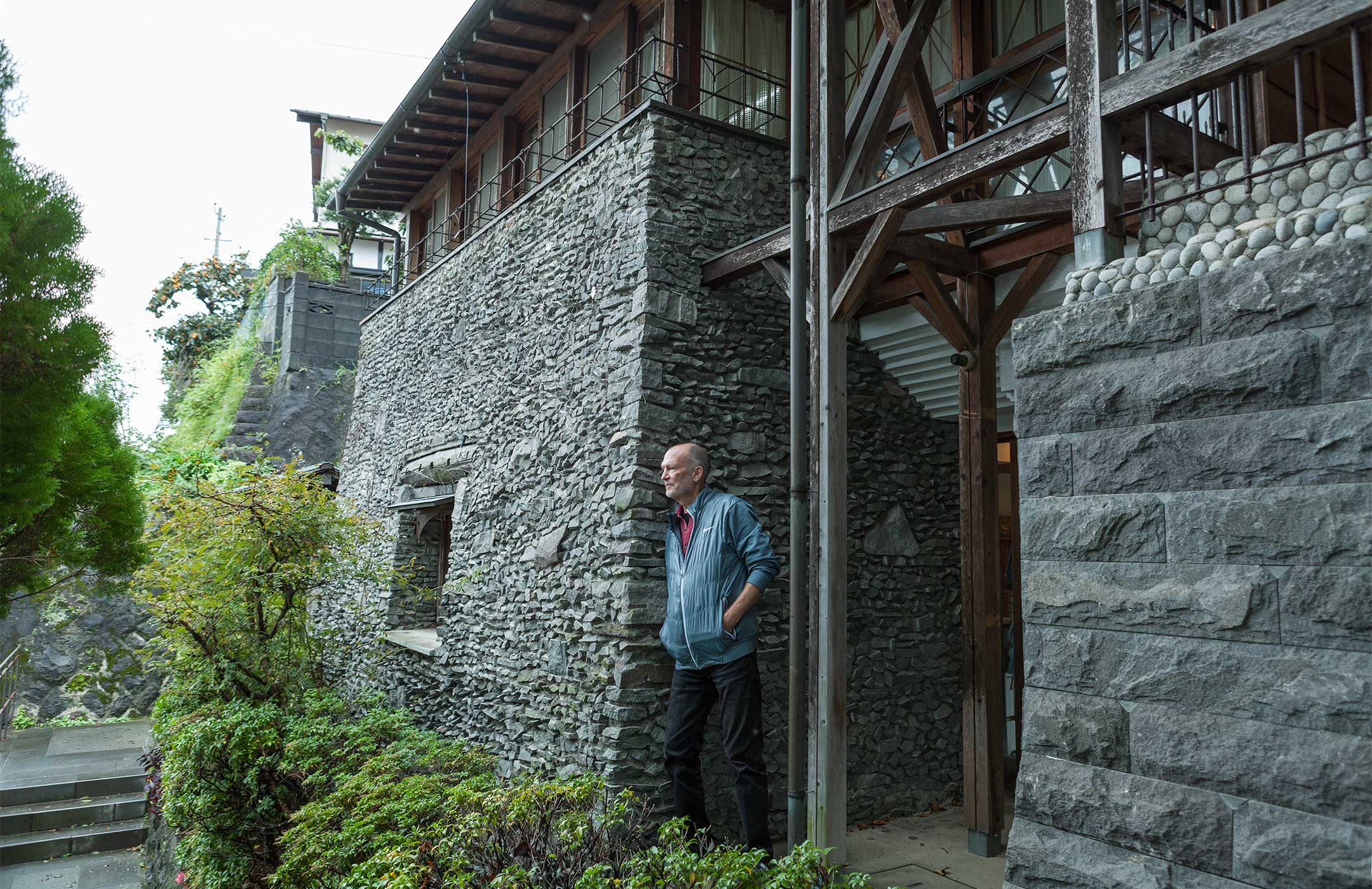
丘から港に向けて歩いていくと「コミュニティ真鶴」という建物にたどり着く。「まちづくり条例」の実例として建てられたもの。表通りからはちょっと高い位置にあり、隠されたように佇む。しかし、建物の背後に走る美しく装飾された石造りの小道側から見ると、風が流れる開かれた場所となっており、オープンスペースといくつかの独立した「離れ」で人々を歓迎する。私たちが訪れた日には、ある部屋では年配者のグループがスケッチのレッスンをし、その前を横切ってやってきた学校帰りの小学生たちが、別の部屋で家路に着くまでのひとときを、友人たちと楽しそうに過ごしていた。
「コミュニティ真鶴」を管理する「真鶴未来塾」の代表理事である奥津秀隆さんは、この施設にインプットされた「美の基準」のひとつひとつを教えてくれた。屋根の突端に施された鶴の飾り(基準:屋根飾り)、外壁に用いられた真鶴の採石場からの本小松石(基準:地の生む材料)、大きな窓や木製の柱(基準:柱の雰囲気)、中庭の石のテーブル(基準:ほぼ中心の焦点)など。
この小さな施設は、維持していく資金を得ることに苦労しながら、様々な浮き沈みを経てきた。しかし奥津さんは、真鶴町に対して価値ある仕事を続けていく手段を見つけることこそ、この上なく重要だと考えている。
「見てください」と川口瞬さん。港と相模湾を見下ろす高台から、彼は私の視線をある方向へと導いた。その先には、彼が考える真鶴の開発規制による最良の成果があった。「町並みは、自然のランドスケープに従っているんですよ」と話す。
確かにその通りであった。高い建物が一切なく、丘からの斜面に従って、港を囲むように平屋か2階建ての建物があるだけだ。家々の間に見え隠れするのは、植栽の緑。まるで家屋の屋根に見られる真紅やブルーと呼応しているかのようだ。高層建築物がないことで、高台からの自然な景観を維持していることは一目瞭然だった。
川口さんの真鶴住人としての歴史はまだ浅い。しかし、彼ほどにこの町に暮らすことの価値を紹介する適任者はいないだろう。彼は数年前、パートナーの來住友美さんとともにこの地にやってきた。そして町役場からほど近い場所に、彼らが実現しようとしていたゲストハウスを備える出版社「真鶴出版」のための要件を満たす快適な伝統的家屋を見つけた。ここに訪れるゲストには、彼らと同様にこの地に住まいを探しにくる人が多いようだ。
私たちを町歩きへ喜んで連れ出してくれた。町の暮らしの一部を成す『美の基準』がどのようなものか? にフォーカスした興味深いツアーだ。川口さんの後について狭い路地を歩いてゆく。彼は様々な『美の基準』を指差しながら話をしてくれる。みかんや柑橘系の木々が植えられた庭(基準:実のなる木)、庭と路地の間にある曖昧な境界線(基準:少し見える庭) 、町中に広がる階段(基準:青空階段)。そして井戸やベンチの数々は、ご近所同士が雑用をしながらおしゃべりができるちょっとした共有スペースとなっている。
「コミュニティ真鶴」を管理する「真鶴未来塾」の代表理事である奥津秀隆さんは、この施設にインプットされた「美の基準」のひとつひとつを教えてくれた。屋根の突端に施された鶴の飾り(基準:屋根飾り)、外壁に用いられた真鶴の採石場からの本小松石(基準:地の生む材料)、大きな窓や木製の柱(基準:柱の雰囲気)、中庭の石のテーブル(基準:ほぼ中心の焦点)など。
この小さな施設は、維持していく資金を得ることに苦労しながら、様々な浮き沈みを経てきた。しかし奥津さんは、真鶴町に対して価値ある仕事を続けていく手段を見つけることこそ、この上なく重要だと考えている。
「見てください」と川口瞬さん。港と相模湾を見下ろす高台から、彼は私の視線をある方向へと導いた。その先には、彼が考える真鶴の開発規制による最良の成果があった。「町並みは、自然のランドスケープに従っているんですよ」と話す。
確かにその通りであった。高い建物が一切なく、丘からの斜面に従って、港を囲むように平屋か2階建ての建物があるだけだ。家々の間に見え隠れするのは、植栽の緑。まるで家屋の屋根に見られる真紅やブルーと呼応しているかのようだ。高層建築物がないことで、高台からの自然な景観を維持していることは一目瞭然だった。
川口さんの真鶴住人としての歴史はまだ浅い。しかし、彼ほどにこの町に暮らすことの価値を紹介する適任者はいないだろう。彼は数年前、パートナーの來住友美さんとともにこの地にやってきた。そして町役場からほど近い場所に、彼らが実現しようとしていたゲストハウスを備える出版社「真鶴出版」のための要件を満たす快適な伝統的家屋を見つけた。ここに訪れるゲストには、彼らと同様にこの地に住まいを探しにくる人が多いようだ。
私たちを町歩きへ喜んで連れ出してくれた。町の暮らしの一部を成す『美の基準』がどのようなものか? にフォーカスした興味深いツアーだ。川口さんの後について狭い路地を歩いてゆく。彼は様々な『美の基準』を指差しながら話をしてくれる。みかんや柑橘系の木々が植えられた庭(基準:実のなる木)、庭と路地の間にある曖昧な境界線(基準:少し見える庭) 、町中に広がる階段(基準:青空階段)。そして井戸やベンチの数々は、ご近所同士が雑用をしながらおしゃべりができるちょっとした共有スペースとなっている。
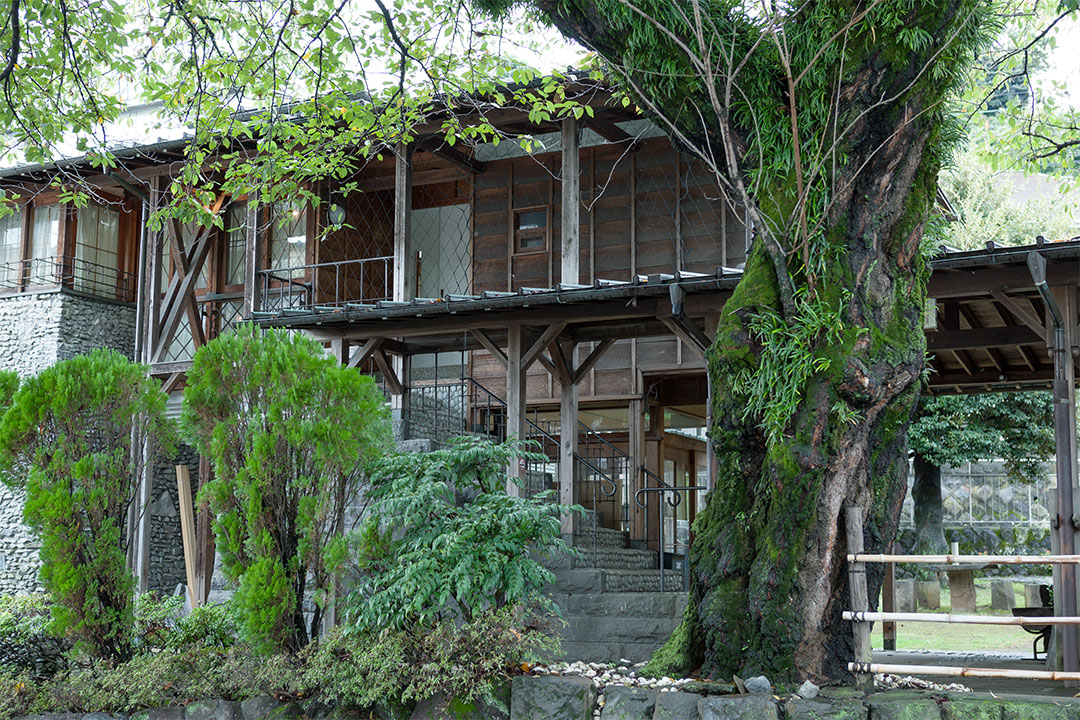
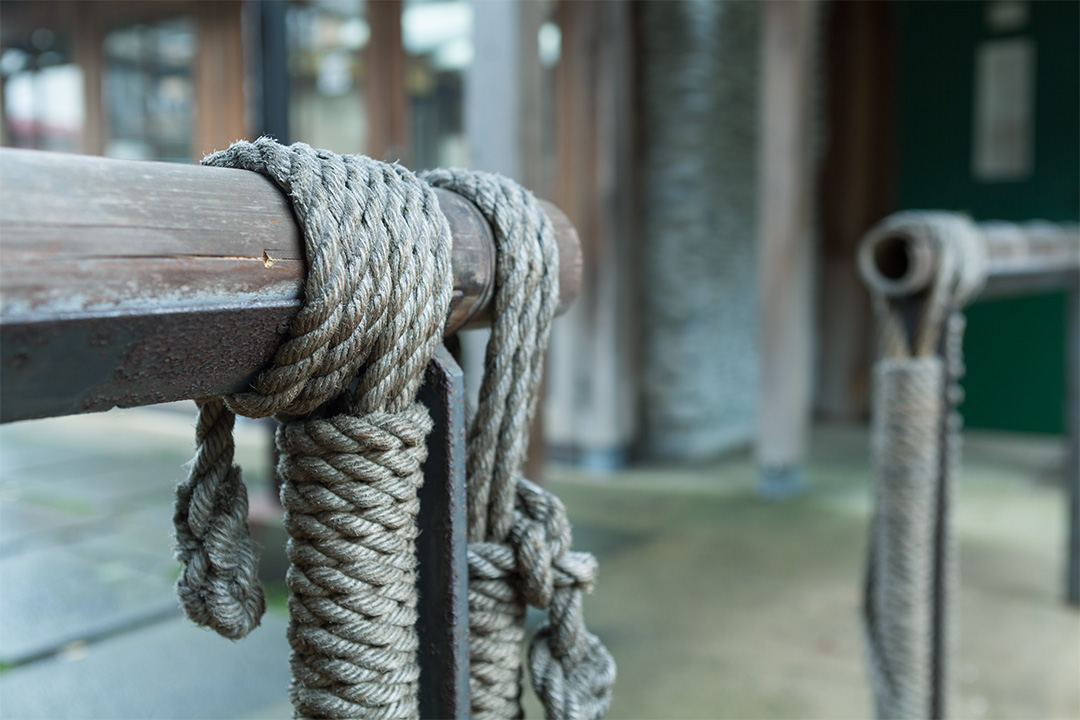
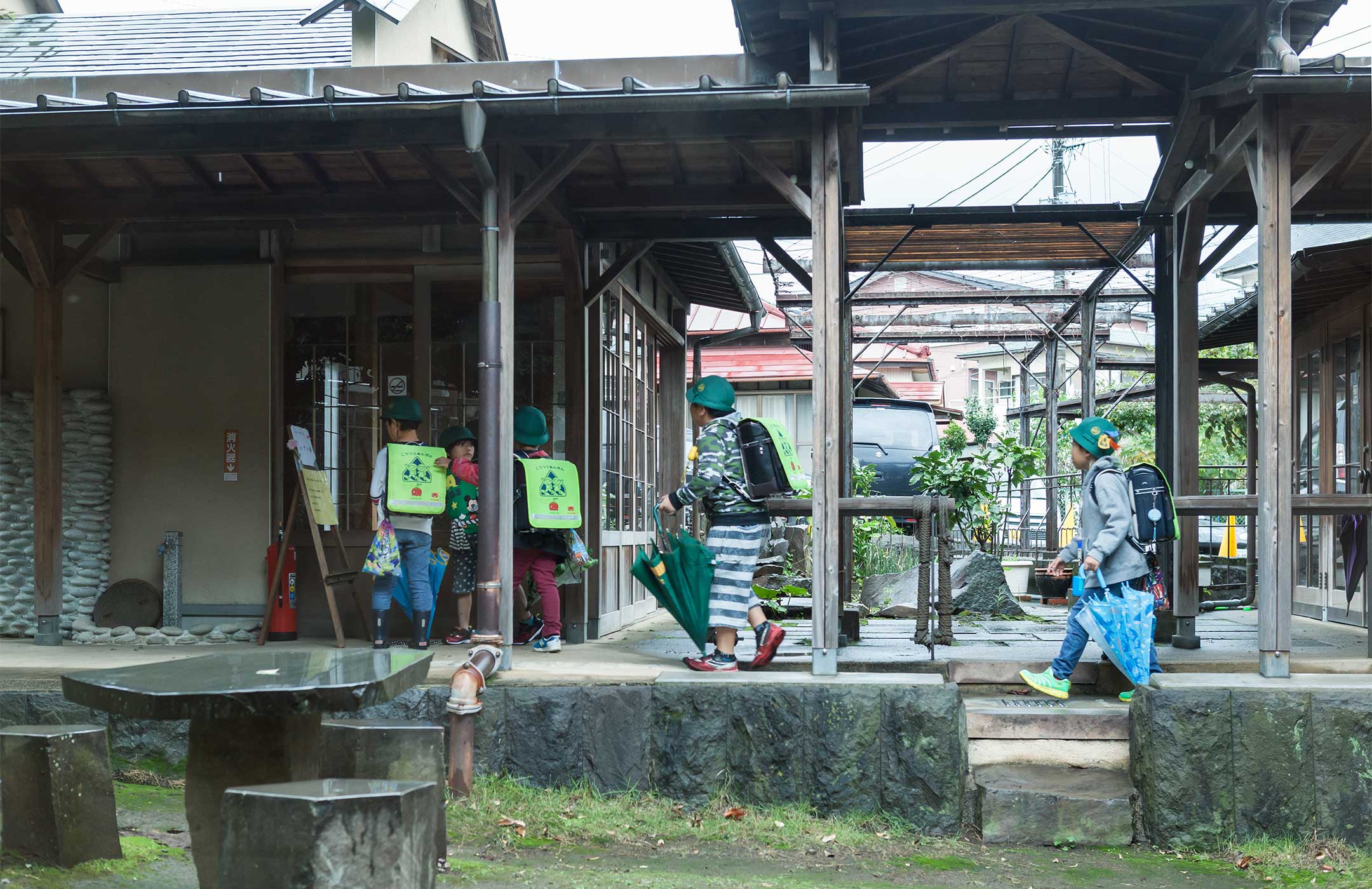
私は、港を見下ろす丘に到達するまで夢中だった。私が丘の上に姿を現した大規模な建物に気づくなり、川口さんが『美の基準』の完成前に建てられたものだと教えてくれた。私は思わず笑ってしまった。失敗もまた、重要な実例になることを確認しあったのだった。開発の手を阻止できなかった場合に、どういったことになるかを示してくれている。
真鶴が、日本の多くの町が苦しむ経済低迷の解決策を握っているかどうかはわからない。他の都市と同様に、高齢化は進み、漁業や農業の跡取りは減少し、喜んで移住してくる人々よりも、空き家の数はずっと多いのが現状だ。しかし、真鶴にはとても魅力的なものがある。それは、決して屈服せず立ち向かう『七人の侍』スタイルだ。「発展」とは、魅力的な言葉であるが、時に金銭、価値観の変化や破壊を意味する。80年代後半を振り返ってみると、暴走的な建設が多くの地方を破壊した。しかし真鶴は、地域に根付いたライフスタイルを守るために、クリエイティブでポジティブな手段を持って前進できることを当時から認識していた。事実、それは古き良き文化に光を当て、維持・継承していくためのとても現代的な第一歩だといえる。
そして鍵を握っているのは、この上なくシンプルな伝統的手段によって確立された、称賛されるべき行動規範の進化だといえるだろう。湘南が地域開発を続けていくのであれば、大抵の場合、その勢いは衰えることがない。その時こそ、地域のための「基準」、私たちが従うべき条例やコンセプトを考える瞬間なのだ。
真鶴の『美の基準(Design Code)』に倣って、私たちにも心に留めておくべき『ショウナンコード』をつくることはできないだろうか? そのためにはおそらく、真鶴がそうしてきたように、どのような町や村、ビーチや山、渓谷を開発することが望ましいかを考えさせられるだろう。私たちは、保持したいものと要らないもの、愛するものと嫌いなものについてより深く考えるようになるだろう。そして、シンプルに何が必要で、何を欲しているか? を。
港から再び高台に登ってきたところで、川口さんに最後の質問をした。「『美の基準』の中で、どの基準が最も重要だろうか?」と。彼は躊躇しなかった。港の風景からひとつ突き出た背の高い建物を指差し、「ふさわしくない場所に高い建物をつくらないこと」と言った。
彼は正しかった。真鶴からの家路、海岸線のハイウェイから高層ビルがそれぞれをしのぐように突き出る光景を目の当たりにしたのだ。それはまるで、美しい景色の獲得合戦をするかのような光景だった。すでにそこには、本来の海岸線の風景などまったく存在していない。私はより良いコミュニティのために、自分の欲望を抑制するための「Code of honor(倫理規程)」が必要であることを痛感したのだ。
だから『湘南コード』の最初のコードとして、川口さんの指摘を取り上げたい。すでに多くの場所で手遅れであることは承知の上だ。だが、せめてこれからの開発において、私たちは一度足を止め、それについて考える必要がある。
真鶴が、日本の多くの町が苦しむ経済低迷の解決策を握っているかどうかはわからない。他の都市と同様に、高齢化は進み、漁業や農業の跡取りは減少し、喜んで移住してくる人々よりも、空き家の数はずっと多いのが現状だ。しかし、真鶴にはとても魅力的なものがある。それは、決して屈服せず立ち向かう『七人の侍』スタイルだ。「発展」とは、魅力的な言葉であるが、時に金銭、価値観の変化や破壊を意味する。80年代後半を振り返ってみると、暴走的な建設が多くの地方を破壊した。しかし真鶴は、地域に根付いたライフスタイルを守るために、クリエイティブでポジティブな手段を持って前進できることを当時から認識していた。事実、それは古き良き文化に光を当て、維持・継承していくためのとても現代的な第一歩だといえる。
そして鍵を握っているのは、この上なくシンプルな伝統的手段によって確立された、称賛されるべき行動規範の進化だといえるだろう。湘南が地域開発を続けていくのであれば、大抵の場合、その勢いは衰えることがない。その時こそ、地域のための「基準」、私たちが従うべき条例やコンセプトを考える瞬間なのだ。
真鶴の『美の基準(Design Code)』に倣って、私たちにも心に留めておくべき『ショウナンコード』をつくることはできないだろうか? そのためにはおそらく、真鶴がそうしてきたように、どのような町や村、ビーチや山、渓谷を開発することが望ましいかを考えさせられるだろう。私たちは、保持したいものと要らないもの、愛するものと嫌いなものについてより深く考えるようになるだろう。そして、シンプルに何が必要で、何を欲しているか? を。
港から再び高台に登ってきたところで、川口さんに最後の質問をした。「『美の基準』の中で、どの基準が最も重要だろうか?」と。彼は躊躇しなかった。港の風景からひとつ突き出た背の高い建物を指差し、「ふさわしくない場所に高い建物をつくらないこと」と言った。
彼は正しかった。真鶴からの家路、海岸線のハイウェイから高層ビルがそれぞれをしのぐように突き出る光景を目の当たりにしたのだ。それはまるで、美しい景色の獲得合戦をするかのような光景だった。すでにそこには、本来の海岸線の風景などまったく存在していない。私はより良いコミュニティのために、自分の欲望を抑制するための「Code of honor(倫理規程)」が必要であることを痛感したのだ。
だから『湘南コード』の最初のコードとして、川口さんの指摘を取り上げたい。すでに多くの場所で手遅れであることは承知の上だ。だが、せめてこれからの開発において、私たちは一度足を止め、それについて考える必要がある。
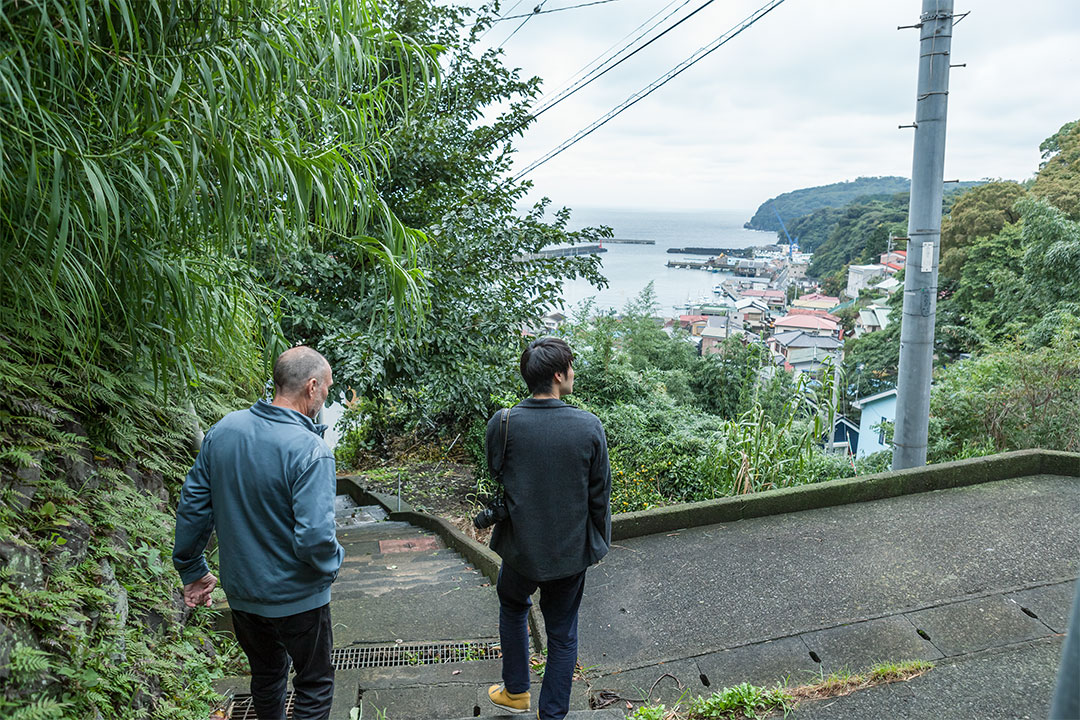
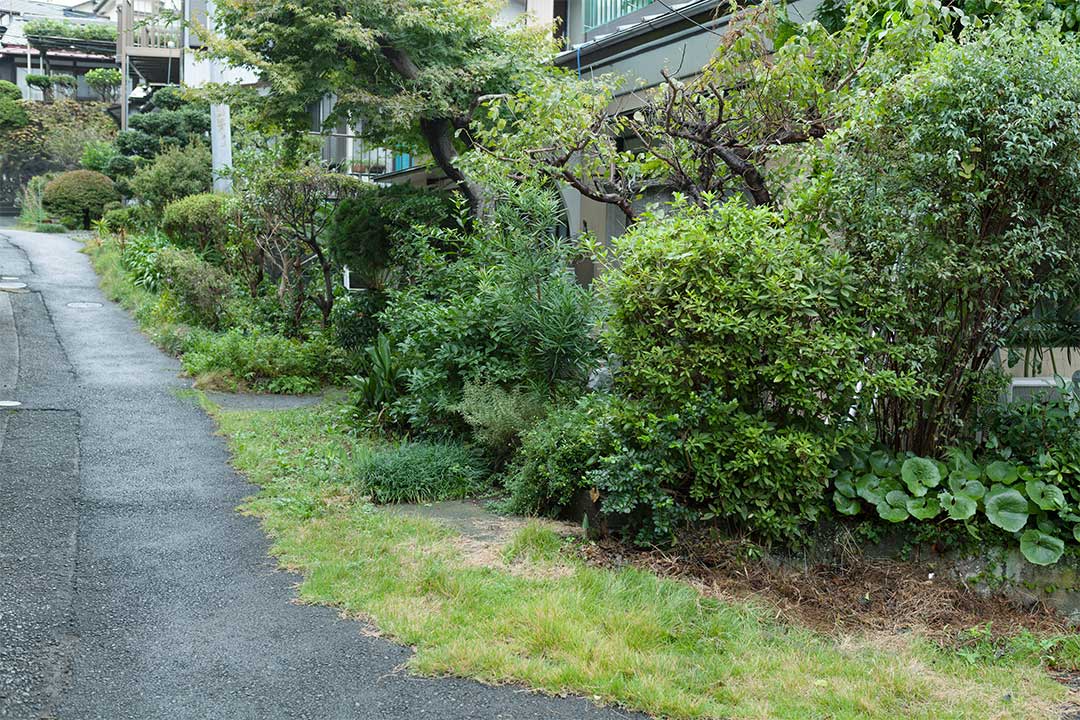
SHONAN CODE no.1
“ランドスケープの自然な輪郭を残す"
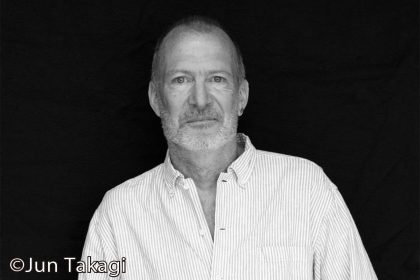
PROFILE
グレゴリー・スター Gregory Starr
アメリカ人ジャーナリスト、編集者、映画評論家。横須賀市秋谷在住。日本在住35年。『プレミア日本版』や『講談社インターナショナル』の編集長を経て、独立。FCCJ(日本外国特派員協会)が出版する『Number1 Shimbun』の編集やTOKYO FM『スカパー! 日曜シネマパーク』のナビゲーターなどで活躍後、出版社「Sora Books」を創立。『ほぼ日』や『Modern Living』など数多くの翻訳エディターとしても活躍。
The Shonan Code: Manazuru’s brave stand
THIS IS A STORY THAT is remarkably similar to Kurosawa’s Seven Samurai. When a small town faces an invasion by powerful forces, some of the townspeople get together and decide to fight back. Realizing they need help, they go looking for experts to help them in their battle against a more powerful foe. They’re joined by a few men that help them formulate a plan, and despite some opposition among the townfolk, in the end they are able to protect their lands and livelihood from the invading forces and go on with their lives.
This tale, however, is a recent one and the town with its determined defenders is Manazuru, located on a small forested peninsula jutting into the sea from the elbow where Shonan ends and Izu begins. Why the tale is important is because it offers a thought provoking example for anyone thinking about the conservation of community, lifestyles and culture.
ON THE SECOND FLOOR of the very typical, nondescript town office of Manazuru, Hidetaka Tada is in charge of preventing the invaders from returning. He tells us the story of how in early Heisei, Manazuru was targeted by developers intent on turning its hills and seafront into clusters of resort mansions – the type of development that already had so drastically changed the landscape of Atami and other coastal towns during the bubble years. The Manazuru townsfolk were divided, for and against, but the conservationist faction won in a bitterly fought election, and the newly elected mayor took the responsibility of abiding by the people’s voice.
With the help of three outsiders, planner Kazuo Noguchi, Hosei University Professor Takayoshi Igarashi and architect Shuichi Ikegami, the may led the town in looking closely at their surroundings and what they considered to be essential elements that defined the character of the community. Then – building on a format that was first proposed in A Pattern Language, a 1977 book by architects and planners on the importance of architecture, urban development and community – they created a set of regulations they called “Design Code:Regulations for Manazuru development”.
Sitting at the counter, Mr. Tada shows us a copy of the Manazuru regulations, opening the book with some reverence. Unlike the many dense, unreadable products of local bureaucracies everywhere, this is a warm-textured, 168-page guide with titles as specific as “Dimensions of doors and windows” and as vague as “Sufficient parking space”. The guidelines are easy to grasp, though, with short explanations, illustrated with charming sketches and photos. Turning the pages, one can feel the care and time that was spent in developing the concepts on every page, how hard the team must have studied the town’s characteristics and searched for ways to keep and improve on them.
In the end, it seems, all the work was worth the effort. The regulations helped stop the willy-nilly encroachment by developers and builders who were forced to stop and deal with how their construction would affect the surrounding environment. And they are still doing their job. Today, Mr. Tada’s task is to ensure that the regulations continue to be met, going over the 69 points with architects and construction companies during the planning stage of new buildings. The regulations are so commonsense and practical from a conservationist point of view that it is hard to imagine anyone disagreeing with them.
A SHORT HIKE DOWN THE HILL towards the port stands Community Manazuru, built as a concrete case study to show how the regulations can be used. From the street, it is partially elevated, hidden by greenery and a clever sloped entrance. But from the beautifully decorated stone pathway that winds behind it, it is airy, welcoming, an expanse of open space and scattered rooms. Today, in one room, a group of elderly folk are having a sketching lesson, while children scamper past their windows on their way to another room where they’ll play for a while before heading home before dark.
Hidetake Okutsu, a director of the association running the site, points out examples of the thought that went into the structure – the crane-shaped ornament on the peak of the roof (code: Roof ornaments), the stone from the local quarry used in the outer walls (code: Local materials), the openness of large windows and wooden columns (code: Atmospheric columns), the stone table in the courtyard (code: Central focus points).
The small complex has gone through ups and downs, struggling to find the funds to continue its operation but Mr. Okutsu believes its important enough to the town to make finding ways to keep going a worthy task. As we leave, the kids are cajoling the volunteer obasan to give them some candy in one room, and the elderly members of the sketch group are bent over their desks, hard at work.
FROM HIGH ON A HILL OVER LOOKING the port and SAGAMI Bay, Shun Kawaguchi is directing our gaze toward what he considers one of the better consequences of the regulations governing development in Manazuru. “Look,” he says, sweeping his arm in an arc leading down to the port, “the townscape follows the natural landscape.”
He’s right. I can follow where he’s pointing and there are no tall buildings, just one- and two-story structures that clearly follow the slope from the hills surrounding the port down to the water. Interspersed among the houses are swatches of green that seem to connect the forest green, dark reds and blues of the roofs of Manazuru. From this perspective, it is obvious that the absence of tall buildings breaking up the landscape maintains the natural perspective of the angle of higher ground to the sea.
Kawaguchi-san is a recent resident of Manazuru, but you couldn’t find anyone better to introduce the benefits of living here. He moved here with his partner, Tomomi Kishi, a few years ago, after searching for a compatible and natural place to live. They first came on a two-week trial, then found a comfortable, traditional house not far from the town office that met their requirements to create a guest house for visitors, some of whom are on a similar quest to find a natural place to live.
Besides offering a quiet stay on a gentle slope overlooking the town, Shun and his just-registered wife, Tomomi, treat all of their house guests to a walk-about of Manazuru, and it’s clear that they have a deep attachment to their new home. They are busy expanding their guest house, working on fixing up another traditional home right across the alley, yet Shun seems happy to take us on a tour of the town, with a special focus on how the Design Code regulations really make up part of the town’s life.
So we follow him through narrow alleyways while Shun points out the mikan and other citrus trees that populate the gardens (code:Fruit trees), the blurred border between the gardens of some houses and the road (code:Glimpses of gardens), the awesome view from what is an otherwise bland building, the stairways that permeate the village (code:Stairs open to the sky), and open spaces like a well that is used by those nearby—that also offers space where the neighbors can chat while they do their chores.
By the time we reach the top of the hill overlooking the port, I’m hooked. I notice a massive building looming over the peninsula, and Shun tells me that was one of the buildings that was built before the kijun. We laugh, and agree that failures are important as examples to show what would have happened if no one had stopped the developers.
IT'S BEEN A GREY, RAYNY DAY, but it stopped just when we started our walk. Now, after a quiet moment absorbing the view of the clouds and the sea and the town, we make our way down to the port, winding our way down a stairway that in no time at all, transports us to sea level, to the pier where a family is teaching a young boy to fish. When he lifts his line, there’s something wriggling on the hook. It’s small, maybe hase or some other surface fish. But his face is alight, overjoyed with his success, so he may have also caught the fishing bug, the beginning of a life spent thinking about the right rod, the right bait, the right tide, the right time of day.
I don’t know if Manazuru has the solution to the malaise that so many towns in Japan are suffering from. Like everywhere else, the population is aging, the number of young people willing to take over the fishing and farming is dropping, and there are more empty houses than there are people willing to move in.
But there’s something that’s very attractive about Manazuru, and that is its “seven-samurai” style of not giving in, but fighting back. Progress is an attractive word, and too often it means money, and change and the destruction of values. But even back at the beginning of Heisei, when the bubble was responsible for destroying much of Japan’s countryside, Manazuru understood that progress can also mean moving forward in creative, positive ways that conserve the basic lifestyles of the area. It didn’t bow to the financial benefits of runaway construction, but kept its honor – in fact, it found a contemporary path to highlight and support its ancient culture.
And the key, it seems, was their development of a code of honor that was used as a defense from outsiders, and to build confidence in traditional ways that were as simple as using stones from the local quarry.
AS THE SHONAN ARA CONTINUES TO DEVELOPE, more often than not uncontrolled and unabated, maybe it’s time to think of kijun for this area, and come up with regulations or concepts that will govern us. Perhaps, like Manazuru’s code of beauty, we could create a “Shonan Code,” so to speak. Perhaps, like Manazuru, this would make us think, make us challenge the status quo, make us consider how we want our towns and cities, our villages and beaches, our mountains and valleys, to develop. Perhaps we would think more deeply about what we want to keep and what we want to discard; what we love and what we hate; what we need and what we simply desire.
As we climbed up from the port, I asked Shun Kawasaki a last question. “Of all the regulations in the Design Code, which one is the most important?” He didn’t hesitate. He pointed back to the one tall building jutting up like from the port of Manazuru, and said, “Don’t build tall buildings where they don't belong. They destroy the landscape.”
He’s right. On the coast road back home from Manazuru, I watched the outline of the land as the highrises increased, each building trying to outdo its neighbor in finding the best sea view over the highway. I watched as the coastline lost its original landscape—and its character. And while I understand the appeal of a great view, sometimes a code of honor requires people to surrender their desires for the greater good of the community.
So I’m going to appropriate his words as the very first category of the Shonan Code, in the hope that while it’s far too late in many cases, we should all pause and think about it when thinking of further development:
SHONAN CODE no.1
“Don’t destroy the natural contours of the landscape.”
This tale, however, is a recent one and the town with its determined defenders is Manazuru, located on a small forested peninsula jutting into the sea from the elbow where Shonan ends and Izu begins. Why the tale is important is because it offers a thought provoking example for anyone thinking about the conservation of community, lifestyles and culture.
ON THE SECOND FLOOR of the very typical, nondescript town office of Manazuru, Hidetaka Tada is in charge of preventing the invaders from returning. He tells us the story of how in early Heisei, Manazuru was targeted by developers intent on turning its hills and seafront into clusters of resort mansions – the type of development that already had so drastically changed the landscape of Atami and other coastal towns during the bubble years. The Manazuru townsfolk were divided, for and against, but the conservationist faction won in a bitterly fought election, and the newly elected mayor took the responsibility of abiding by the people’s voice.
With the help of three outsiders, planner Kazuo Noguchi, Hosei University Professor Takayoshi Igarashi and architect Shuichi Ikegami, the may led the town in looking closely at their surroundings and what they considered to be essential elements that defined the character of the community. Then – building on a format that was first proposed in A Pattern Language, a 1977 book by architects and planners on the importance of architecture, urban development and community – they created a set of regulations they called “Design Code:Regulations for Manazuru development”.
Sitting at the counter, Mr. Tada shows us a copy of the Manazuru regulations, opening the book with some reverence. Unlike the many dense, unreadable products of local bureaucracies everywhere, this is a warm-textured, 168-page guide with titles as specific as “Dimensions of doors and windows” and as vague as “Sufficient parking space”. The guidelines are easy to grasp, though, with short explanations, illustrated with charming sketches and photos. Turning the pages, one can feel the care and time that was spent in developing the concepts on every page, how hard the team must have studied the town’s characteristics and searched for ways to keep and improve on them.
In the end, it seems, all the work was worth the effort. The regulations helped stop the willy-nilly encroachment by developers and builders who were forced to stop and deal with how their construction would affect the surrounding environment. And they are still doing their job. Today, Mr. Tada’s task is to ensure that the regulations continue to be met, going over the 69 points with architects and construction companies during the planning stage of new buildings. The regulations are so commonsense and practical from a conservationist point of view that it is hard to imagine anyone disagreeing with them.
A SHORT HIKE DOWN THE HILL towards the port stands Community Manazuru, built as a concrete case study to show how the regulations can be used. From the street, it is partially elevated, hidden by greenery and a clever sloped entrance. But from the beautifully decorated stone pathway that winds behind it, it is airy, welcoming, an expanse of open space and scattered rooms. Today, in one room, a group of elderly folk are having a sketching lesson, while children scamper past their windows on their way to another room where they’ll play for a while before heading home before dark.
Hidetake Okutsu, a director of the association running the site, points out examples of the thought that went into the structure – the crane-shaped ornament on the peak of the roof (code: Roof ornaments), the stone from the local quarry used in the outer walls (code: Local materials), the openness of large windows and wooden columns (code: Atmospheric columns), the stone table in the courtyard (code: Central focus points).
The small complex has gone through ups and downs, struggling to find the funds to continue its operation but Mr. Okutsu believes its important enough to the town to make finding ways to keep going a worthy task. As we leave, the kids are cajoling the volunteer obasan to give them some candy in one room, and the elderly members of the sketch group are bent over their desks, hard at work.
FROM HIGH ON A HILL OVER LOOKING the port and SAGAMI Bay, Shun Kawaguchi is directing our gaze toward what he considers one of the better consequences of the regulations governing development in Manazuru. “Look,” he says, sweeping his arm in an arc leading down to the port, “the townscape follows the natural landscape.”
He’s right. I can follow where he’s pointing and there are no tall buildings, just one- and two-story structures that clearly follow the slope from the hills surrounding the port down to the water. Interspersed among the houses are swatches of green that seem to connect the forest green, dark reds and blues of the roofs of Manazuru. From this perspective, it is obvious that the absence of tall buildings breaking up the landscape maintains the natural perspective of the angle of higher ground to the sea.
Kawaguchi-san is a recent resident of Manazuru, but you couldn’t find anyone better to introduce the benefits of living here. He moved here with his partner, Tomomi Kishi, a few years ago, after searching for a compatible and natural place to live. They first came on a two-week trial, then found a comfortable, traditional house not far from the town office that met their requirements to create a guest house for visitors, some of whom are on a similar quest to find a natural place to live.
Besides offering a quiet stay on a gentle slope overlooking the town, Shun and his just-registered wife, Tomomi, treat all of their house guests to a walk-about of Manazuru, and it’s clear that they have a deep attachment to their new home. They are busy expanding their guest house, working on fixing up another traditional home right across the alley, yet Shun seems happy to take us on a tour of the town, with a special focus on how the Design Code regulations really make up part of the town’s life.
So we follow him through narrow alleyways while Shun points out the mikan and other citrus trees that populate the gardens (code:Fruit trees), the blurred border between the gardens of some houses and the road (code:Glimpses of gardens), the awesome view from what is an otherwise bland building, the stairways that permeate the village (code:Stairs open to the sky), and open spaces like a well that is used by those nearby—that also offers space where the neighbors can chat while they do their chores.
By the time we reach the top of the hill overlooking the port, I’m hooked. I notice a massive building looming over the peninsula, and Shun tells me that was one of the buildings that was built before the kijun. We laugh, and agree that failures are important as examples to show what would have happened if no one had stopped the developers.
IT'S BEEN A GREY, RAYNY DAY, but it stopped just when we started our walk. Now, after a quiet moment absorbing the view of the clouds and the sea and the town, we make our way down to the port, winding our way down a stairway that in no time at all, transports us to sea level, to the pier where a family is teaching a young boy to fish. When he lifts his line, there’s something wriggling on the hook. It’s small, maybe hase or some other surface fish. But his face is alight, overjoyed with his success, so he may have also caught the fishing bug, the beginning of a life spent thinking about the right rod, the right bait, the right tide, the right time of day.
I don’t know if Manazuru has the solution to the malaise that so many towns in Japan are suffering from. Like everywhere else, the population is aging, the number of young people willing to take over the fishing and farming is dropping, and there are more empty houses than there are people willing to move in.
But there’s something that’s very attractive about Manazuru, and that is its “seven-samurai” style of not giving in, but fighting back. Progress is an attractive word, and too often it means money, and change and the destruction of values. But even back at the beginning of Heisei, when the bubble was responsible for destroying much of Japan’s countryside, Manazuru understood that progress can also mean moving forward in creative, positive ways that conserve the basic lifestyles of the area. It didn’t bow to the financial benefits of runaway construction, but kept its honor – in fact, it found a contemporary path to highlight and support its ancient culture.
And the key, it seems, was their development of a code of honor that was used as a defense from outsiders, and to build confidence in traditional ways that were as simple as using stones from the local quarry.
AS THE SHONAN ARA CONTINUES TO DEVELOPE, more often than not uncontrolled and unabated, maybe it’s time to think of kijun for this area, and come up with regulations or concepts that will govern us. Perhaps, like Manazuru’s code of beauty, we could create a “Shonan Code,” so to speak. Perhaps, like Manazuru, this would make us think, make us challenge the status quo, make us consider how we want our towns and cities, our villages and beaches, our mountains and valleys, to develop. Perhaps we would think more deeply about what we want to keep and what we want to discard; what we love and what we hate; what we need and what we simply desire.
As we climbed up from the port, I asked Shun Kawasaki a last question. “Of all the regulations in the Design Code, which one is the most important?” He didn’t hesitate. He pointed back to the one tall building jutting up like from the port of Manazuru, and said, “Don’t build tall buildings where they don't belong. They destroy the landscape.”
He’s right. On the coast road back home from Manazuru, I watched the outline of the land as the highrises increased, each building trying to outdo its neighbor in finding the best sea view over the highway. I watched as the coastline lost its original landscape—and its character. And while I understand the appeal of a great view, sometimes a code of honor requires people to surrender their desires for the greater good of the community.
So I’m going to appropriate his words as the very first category of the Shonan Code, in the hope that while it’s far too late in many cases, we should all pause and think about it when thinking of further development:
SHONAN CODE no.1
“Don’t destroy the natural contours of the landscape.”
